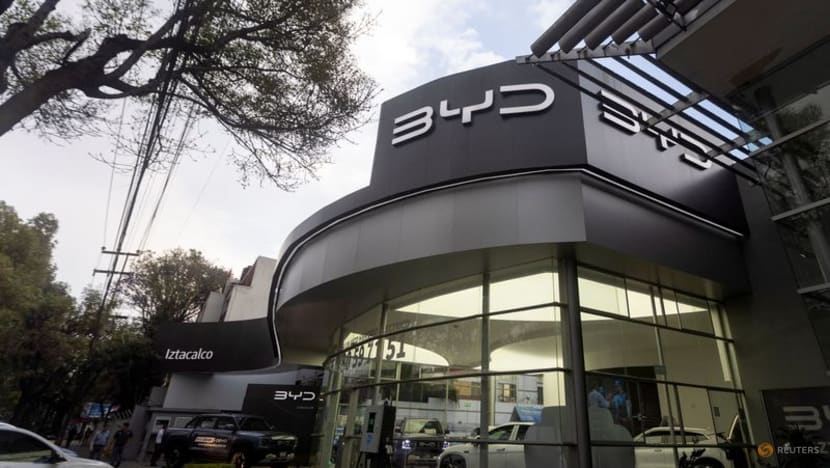The electric vehicle (EV) revolution is no longer a distant vision—it’s here. Global sales of EVs surpassed 10 million in 2022, and countries like Norway already see EVs claiming over 80% of new car sales. Yet, despite this momentum, one stubborn barrier remains: charging time. While gasoline cars refuel in minutes, even the fastest EVs today require 15–30 minutes to achieve an 80% charge. For many drivers, this “charging anxiety” overshadows the environmental and cost benefits of EVs. Enter BYD, China’s EV giant, with a solution so bold it could rewrite the rules: a five-minute charge for 400 km of range. Let’s unpack how this technology works, why it matters, and what it means for the future of transportation.
BYD’s Super e-Platform: A Quantum Leap in EV Tech
In late 2023, BYD unveiled its Super e-Platform, anchored by a 1,000 kW ultra-fast charging system. To put this in perspective, 1,000 kW (1 megawatt) is enough power to run 10 average American homes simultaneously. This system, paired with next-gen 10C Blade Batteries and a record-breaking electric motor, promises to deliver 400 km (249 miles) of range in just five minutes. For context, that’s equivalent to driving from San Francisco to Lake Tahoe on a charge shorter than a coffee break.
But how did BYD achieve this? The answer lies in three innovations:
1. The 1,000 kW Charging System: Breaking the Power Barrier
Most EVs today use 150–350 kW chargers. Tesla’s V4 Supercharger, for example, peaks at 500 kW. BYD’s 1,000 kW system doubles that power, but raw energy isn’t enough—it’s about efficiency.
Energy Transfer: Charging speed depends on how much current a battery can absorb without overheating. BYD’s system uses 800-volt architecture (up from today’s 400V standards) to reduce energy loss and enable higher currents.
Thermal Management: Liquid-cooled cables and connectors prevent overheating, even at 1,000 kW. This is akin to using a high-pressure hose without risking a burst pipe.
Grid Compatibility: While 1 MW chargers strain local grids, BYD integrates buffer batteries at stations to store energy during off-peak hours, releasing it during charging sessions.
2. 10C Blade Batteries: The Heart of the Revolution
BYD’s Blade Battery, a lithium iron phosphate (LFP) design, is already renowned for safety (it survives nail penetration tests without catching fire). The new 10C variant takes this further:
C-Rate Explained: A battery’s “C-rate” measures how fast it charges relative to its capacity. A 1C battery charges fully in 1 hour; 10C means 6 minutes. BYD’s 10C Blade Battery can theoretically handle 10x its capacity in current flow.
Ion Highway: The redesigned cells use a 3D honeycomb structure to shorten the path for lithium ions, reducing resistance. Imagine widening a highway from two lanes to twenty—traffic (ions) moves faster without jams.
Longevity Questions: Critics argue ultra-fast charging degrades batteries faster. BYD claims its LFP chemistry and pulsed charging (alternating high and low currents) mitigate wear, but real-world data will be key.
3. The 30,511 RPM Motor: Speed Meets Efficiency
The Super e-Platform’s motor spins at 30,511 RPM—nearly double Tesla’s Plaid motor (23,308 RPM). Why does this matter?
Power Density: Higher RPM allows more power in a smaller package. The motor delivers 778 hp (580 kW), propelling the Han L sedan from 0–100 km/h in 2.7 seconds—faster than a Ferrari Roma.
Efficiency Gains: Advanced silicon carbide (SiC) inverters reduce energy loss, ensuring that raw speed doesn’t come at the cost of range
Impact on the EV Industry: A Tectonic Shift
1. Killing Range Anxiety, For Real This Time
“Range anxiety” isn’t just about how far an EV goes—it’s about how quickly it can “refuel.” BYD’s five-minute charge brings EVs to parity with gas cars. Imagine road trips where a bathroom break is all the charging you need.
2. BYD vs. Tesla: The Charging Wars Heat Up
Tesla’s 500 kW Superchargers deliver ~270 km in 15 minutes. BYD’s 1,000 kW system does 400 km in 5 minutes—3x faster per kilometer. This forces rivals to accelerate their R&D. Notably, Tesla is rumored to be developing a 1 MW charger, but BYD has beaten them to the punch.
3. Infrastructure: Building the Backbone
BYD plans 4,000 ultra-fast stations across China by 2025. For comparison, Tesla has ~1,800 Superchargers in the country. Each BYD station will cost ~$500,000, requiring partnerships with grid operators and state support.
The New Models: Han L and Tang L
The first vehicles on the Super e-Platform are luxury-focused:
Han L Sedan: 0–100 km/h in 2.7 seconds, 700 km range, AI-powered cabin.
Tang L SUV: 3.6-second acceleration, seven seats, off-road capabilities.
Priced at ~$70,000, they target Mercedes EQ and Tesla Model S buyers. BYD’s vertical integration (it makes batteries, chips, and motors) keeps costs competitive.
Challenges: The Roadblocks Ahead
Cost: 1 MW chargers are expensive. BYD’s stations may prioritize highways and cities first.
Battery Health: Even with LFP’s resilience, repeated ultra-fast charging could degrade cells 10–15% faster, per MIT studies. BYD’s warranty will need to reflect this.
Grid Upgrades: Deploying 4,000 stations in China requires coordination with State Grid Corp, which is investing $22 billion in grid modernization.
Global Implications: Will This Tech Go Worldwide?
BYD is already expanding in Europe, Southeast Asia, and Latin America. However, regions with fragmented grids (e.g., parts of the U.S.) may lag in adopting 1 MW charging. Still, BYD’s innovation pressures global automakers to rethink their roadmaps.
Conclusion: The Dawn of the 5-Minute EV Era
BYD’s breakthrough isn’t just about speed—it’s about redefining expectations. If charging becomes as easy as filling gas, even skeptics may join the EV wave. Challenges remain, but BYD has lit a fuse under the industry. As Wang Chuanfu, BYD’s CEO, declared: “The future of EVs isn’t just electric—it’s instantaneous.”
For drivers, cities, and the planet, that future can’t come soon enough.







0 Comments